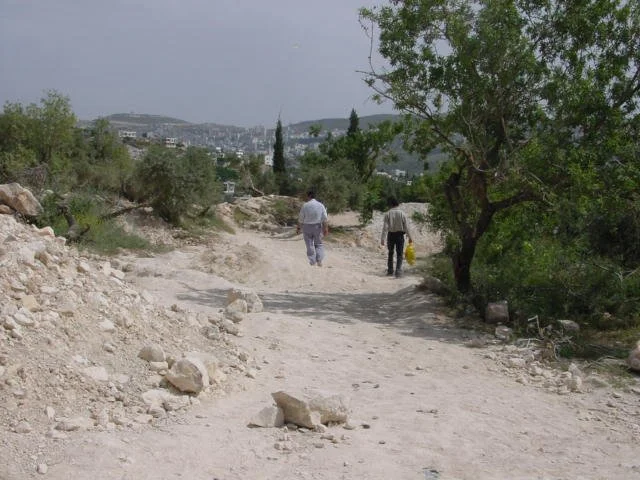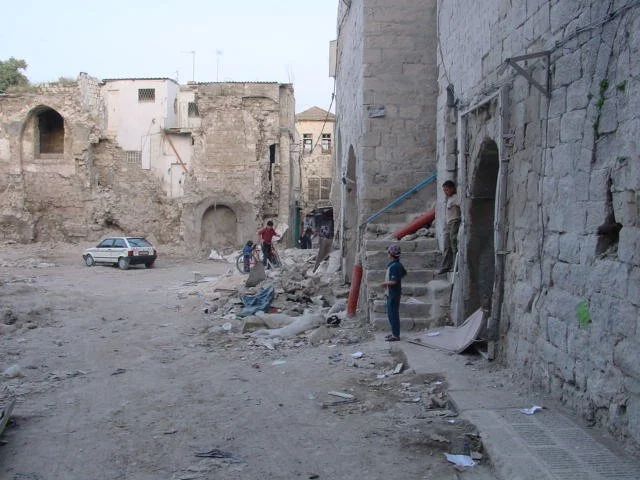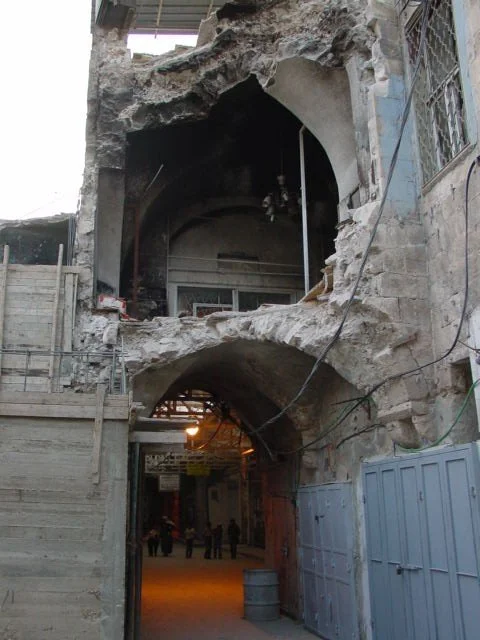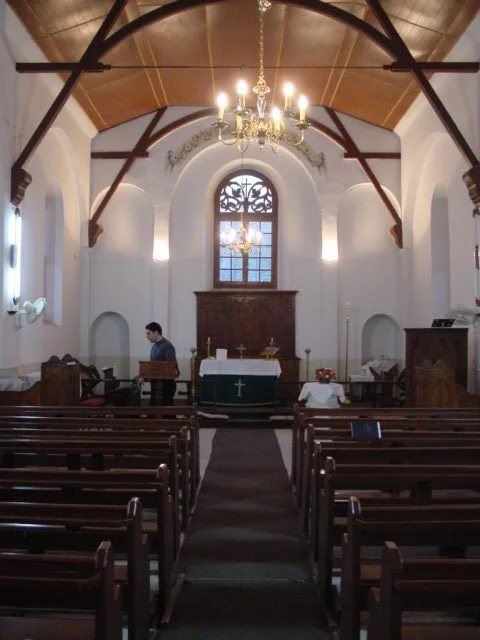May 10, 2002
The Bethlehem situation is "resolved" finally, 26 going to Gaza, 13 (at least one of whom is Christian) going to Cyprus until exiled elsewhere in Europe, and the rest going home. The fate of the internationals who brought food into the Church of the Nativity a few weeks ago is less clear - they don't want to be arrested by Israel, claiming that the nation has no sovereignty over the Church.
There was an attack in southern Israel, in Beersheva, this morning. Marthame had planned to go off to Nablus to visit with Father Hossam, and after much thinking, decided to go ahead. Elizabeth didn't go because she probably couldn't make the trip and get back in time for her class tomorrow. She spent much of the day doing lesson plans and writing.
The long, hot, dusty walk past the village of Zawata.
Today being Friday (the Muslim day of prayer) and the situation being what it is, Marthame had to wait for an hour in Zababdeh to catch a ride. That took him to Tubas, where he waited for two hours for the shared taxi toward Nablus to fill up. Finally, a handful of students from Nablus' An-Najah University headed down, and filled up the taxi, which stopped at the village of Zawata. Then began the long, dusty walk downhill, across the Israeli military road, and into the village on the other side where taxis head off for Nablus. When the military decides to use the road, or when they decide no one should cross, it's dangerous. Otherwise, it's simply an enormous pain in the neck for everyone. (Except for a handful of enterprising villagers, who rent their donkeys out those unable to hike over the "road's" dusty mounds of rocks.)
Some of the destruction in the Nablus’ Old City, where the Israeli military leveled buildings.
Destruction in Nablus’ historic Old City.
He finally arrived at the Anglican Compound, at the edge of Nablus' Old City. When the heated battle and destruction were taking place in Jenin Camp, the Old City here was taking a beating. The Anglican Compound lost one of its old stone walls. Fr. Hossam took Marthame around to see the damage, which after seeing "Ground Zero" in Jenin, is not nearly as shocking. But the losses of life here (80) along with the historical nature of the city (e.g. two thousand-plus year-old soap factories gone), and the overall destruction (as opposed to the centralized obliteration in Jenin) are enormous. Most of the damage was done from the air by F-16s and Apaches, as the ancient streets in the Old City were too narrow for tanks. Now, in many places the winding streets you'd usually find are gone, replaced with what resembles a parking lot.
St. Philip’s Anglican Church in Nablus.
The clean-up has continued (people are in need of getting on with their lives), but what is missing looms like a gaping cavity. The caretakers of the Compound, an Orthodox Nablus family, spent the entirety of the battle and onslaught in their home (and a few days of it in one room) with a tank parked outside. Most of their windows were broken from the sound, and a few were broken from stray gunfire. One metal shutter had an enormous hole blown through it. But they are safe, and it was good to see them.
Fr. Hossam took Marthame to see St. Philip's Anglican Church, where the city's Anglican community worships once a month. The other three weeks they worship in Raffidye (now a neighborhood of sprawling Nablus), but there used to be two thriving communities. It's all part of the shrinking Christian presence.
Word came that Israeli tanks had entered the city and had headed toward 'Askar Camp, so Fr. Hossam left for Raffidye. Fortunately, the tanks stayed near the Camp, so he returned to the Compound for a late night game of pinochle.




